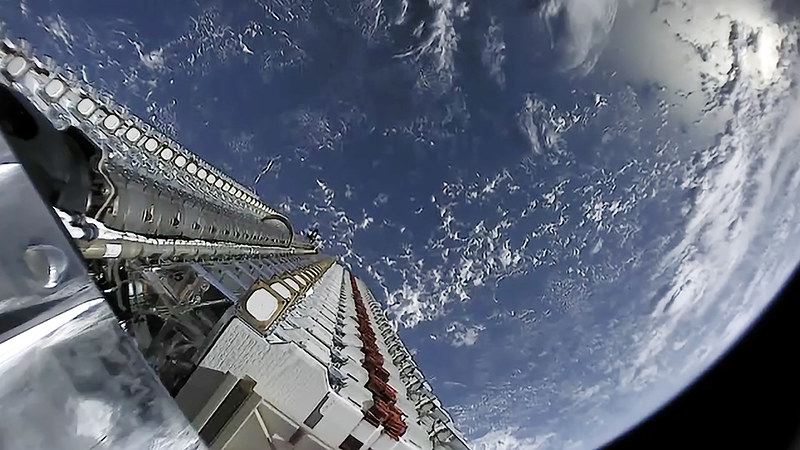An Air Force investigation into how the service could piggyback on the commercial industry’s broadband Internet satellites for cheaper, better communication is moving forward to include two key combat platforms.
The experimentation and prototyping effort, known as Defense Experimentation Using the Commercial Space Internet, or “Global Lightning,” is run by the Air Force Research Laboratory, which has partnered with companies like SpaceX, Iridium, OneWeb, L3Harris, and others from 2018 to 2022 to put communications terminals on aircraft and see how well they share data with satellites and their associated ground terminals. USAF is also looking into the possibility of leasing commercial space Internet as a service, rather than buying large amounts of equipment itself.
“We’re not focused just on any one company,” Greg Spanjers, chief scientist at AFRL’s Strategic Development Planning and Experimentation office, told reporters Nov. 5. “Our intent is to characterize the performance and understand the pros and cons of all of the commercial systems when used on military platforms.”
So far, researchers have used a C-12 to vet data transfer rates with experimental SpaceX satellites. Next week, the program plans to test out data-sharing with the AC-130, followed by the KC-135 in spring or summer 2020, according to Global Lightning Program Manager Brian Beal. Those are large, popular platforms that comprise sizable fleets and are used in areas where commanders wish they had more ability to share information, according to AFRL.
Their work also explores the authorities and other steps the Air Force needs to take to transition the idea to operational use.
Program officials said the tests have proven out much higher Internet connection and data-transfer rates than Air Force aircraft can currently receive. That means faster access to video, weather, and other data in flight, though the service hasn’t tied the capability to a particular type of mission.
“It’s the difference between getting low data-rate text messages and high-[definition], full-motion video,” Spanjers said. “Your high-def TV at home is probably about 5 megabits per second data rate. That’s a data rate well above most of the Air Force platforms that we’re dealing with.”
The military is waiting for commercial industry to build its satellite communications constellations on orbit, such as SpaceX’s Starlink array, so it can tap into the capability on a large scale.
Going forward, the service will also run tests with Lockheed Martin’s open radio architecture that allows comms to switch between satellite constellations. The Air Force wants to be able to move between the systems of various companies as hardware or other changes as possible.
Another prong of the effort will work with Ball Aerospace and Army Futures Command on a phased array radar mounted atop a moving ground vehicle to test communications with spacecrafts in three different orbits.
Several additional contracts are due out in the coming years for further testing, according to AFRL.

